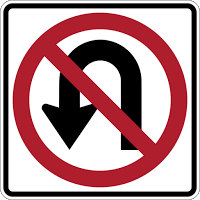Tag Archive: pedestrian safety

Texting and Walking Injuries Are Increasing
August 31, 2015
Texting and walking injuries and deaths are on the rise according to a new report released by the Governors Highway Safety Administration (GHSA) and the danger is especially high for teens. The report is a compilation of several studies including data compiled by Ohio State University, the University of Washington, the University of Georgia, and the Pew Research Center.
According to the Ohio State research, “between 2004 and 2010 the number of pedestrians killed while using a cell phone increased from less than 1% to 3.6%” and, in 2010, more than 1,500 pedestrians were estimated to be treated for injuries related to cell phone use while walking. Since 2005, the number of pedestrians injured while using a cell phone has more than doubled.
The Washington State researchers observed more than 1,100 pedestrians at 20 intersections in Seattle and found that “approximately one-third were engaged in a distracting activity such as emailing, talking to another person or listening to music.”
The University of Georgia researchers did a similar study but selected 20 intersections that were considered to be high risk based on data from the Georgia Department of Transportation. Their study showed that nearly half of pedestrians were engaged in some sort of distracting behavior.
A Pew Research Center survey found that 53 percent of adult cell phone users have bumped into something or someone due to distracted walking. The bump rate is especially high for those in the 18 to 24 year age group.
The problem is especially bad for teens who do this on a regular basis. Safe Kids Worldwide reports that forty percent of teens have been hit or nearly hit by a car, bike or motorcycle while walking. Their report shows that one out of five teens and one out of eight middle schoolers regularly cross the street while distracted by some sort of technology. Teens now have the highest pedestrian death rate among children 19 and younger.
The problem has become so bad that the Urban Dictionary has coined a new phrase for it: Petextrian n. One who texts while walking, usually unaware of their surroundings.
It’s obvious that, if you can’t even text and walk safely, texting while driving is out of the question.
Read more: Everyone Walks

Making a Safe U-Turn
January 30, 2012
Intersection crashes cause the most number of fatalities more than any other crash location. Not only are they spots where red light runners might cause dangers, but also consider the fact that drivers making an innocent U-turn usually become involved if there ever was a crash.
What is truly important is: before making a U-Turn, make sure that you are aware of your state’s laws. Some states allow U-Turns at any intersection, unless there is a traffic sign that states: “No U-Turn Allowed”. There are other states that only allow for U-Turns when there is a “U-Turn Permitted” traffic sign. Almost all states do not allow U-Turns over double yellow lines painted on the road.
You may only make a U-Turn when the traffic light facing you is either a green arrow permitting a U-Turn, or a solid green light. Many people incorrectly assume that they can make a U-Turn while the light is red, even if their vehicle was a considerable distance from the center of the intersection. This is a violation, because doing so is still running a red light.
Here are some rules to making a safe U-Turn:
- Plan your U-Turn by looking for pedestrians or individuals riding bicycles. This means checking if you might hit someone or something when turning into the opposite direction.
- Always look in both directions before beginning your turn. If the light facing you has turned green, wait a second or two for possible red light runners coming from the opposite direction. This is the one tip that might save you the hassle of a crash.
- It’s a good idea to take your foot off the accelerator and moving it closer to the brake, should you need to stop, or when an emergency situation arises.
- If you have started your turn and the light changes, complete your turn as soon as traffic clears. Never try to back up in an effort to avoid blocking the intersection.
- It is important to note that you should always be making your U-Turn while you are at the left portion of the lane closest to the center line of the road. You are not allowed to make a U-Turn near the crest of a hill, a curve, or any other place where other drivers cannot see you from at least 500 feet away from the same direction.
U-Turns are the best way to get back to a location you missed, and making sure you know the right safety precautions while taking them assures you that you get there faster, and safer.
